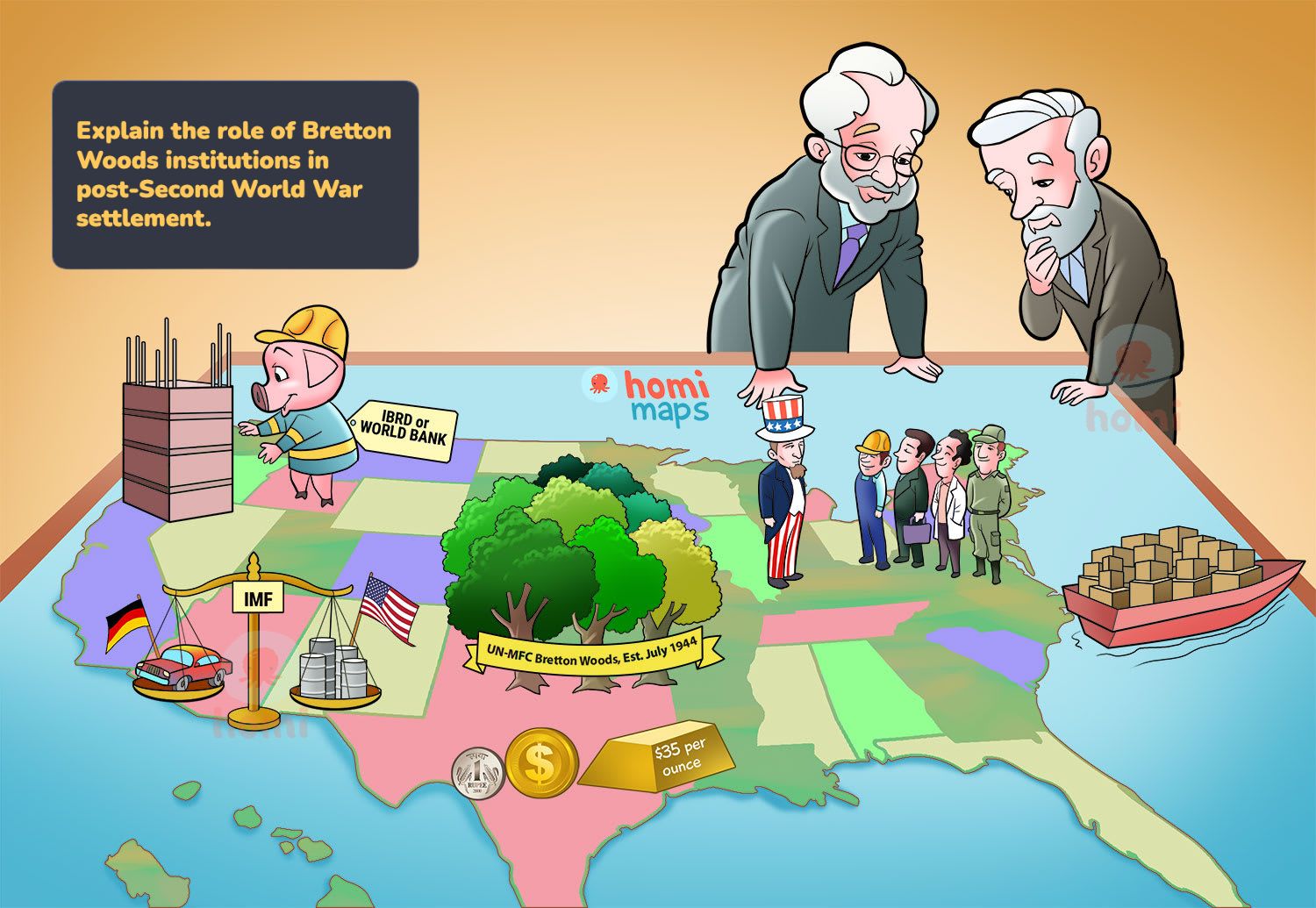
Explain the role of Bretton Woods institutions in post-Second World War settlement.
- Economists and politicians learnt two lessons from the war economics – first, that an industrial society can only be sustained with stable incomes and full employment which cannot be guaranteed by market forces alone but requires government intervention. Secondly, global economies are interlinked and governments need control over this cross-border flow of goods, capital and labour.
- This system aimed to provide economic stability and guarantee full employment in the industrial world. Its framework was agreed upon at the UN Monetary and Financial Conference in July 1944 at Bretton Woods, USA.
- The Bretton Woods conference established the International Monetary Fund (IMF) to deal with external surpluses and deficits of its member nations.
- The International Bank for Reconstruction and Development or the World Bank was set up to finance post-war reconstruction.
- The Bretton Woods system was based on fixed exchange rates of currencies. e.g. the Indian rupee was pegged to the US dollar at a fixed exchange rate which itself was pegged to gold at $35 per ounce.
A visual mnemonic for "Explain the role of Bretton Woods institutions in post-Second World War settlement."
Now let’s remember this lesson with the help of a visual mnemonic. A visual mnemonic is a picture that has cues to remind you the points in the lesson. The mnemonic for this lesson is provided below. Remember to scroll the picture gallery using the arrow on the right.






Previous
Next

